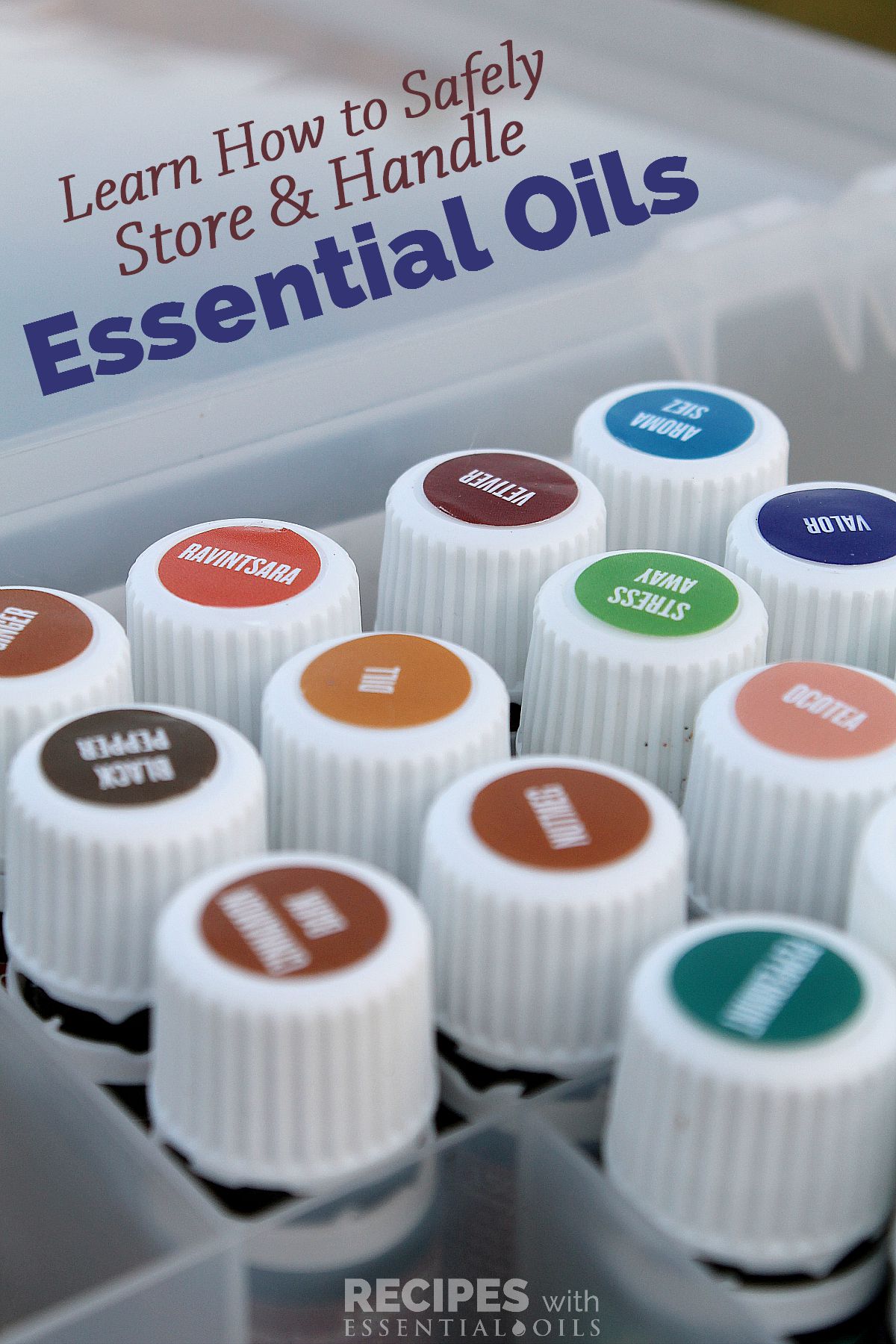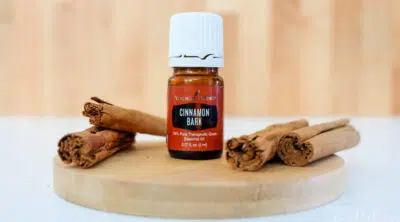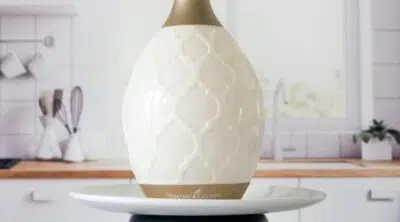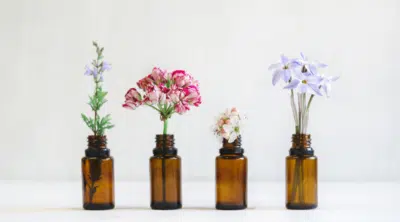It’s important to use essential oils safely. Here are some important tips on how to properly store and handle essential oils.
Storing Essential Oils
- Always store essential oils in dark glass containers in a cool location. Many essential oils will degrade in heat or direct sunlight.
- If you are storing essential oils in the kitchen to use in food recipes, then be sure to store away from the heat of the stove or oven.
- Make sure that the bottle lids are on tightly. Loose lids can allow essential oils to evaporate. This would diminish their benefits and aroma.
- Keep essential oils out of the reach of any children. Treat them just as you would any other potent substances in your home. These are concentrated essences and could be extremely dangerous for children.
- Essential oils have a longer shelf life than any dried herb, seed, or flower. Essential oils, when stored properly, will maintain their intense flavor and aroma for years. This is why we LOVE using essential oils in our recipes!
Handling Essential Oils
- We strongly suggest that you measure drops onto a clean, stainless steel spoon before placing in any recipe. These liquids can flow quickly and you don’t want any extra drops to fall into your mixture. Even a single drop could cause the whole batch to be entirely too strong.
- If you don’t want to measure drops directly from the bottle, measure drops with a clean pipette so as not to contaminate the bottle.
- Always dilute essential oils with a carrier oil according to manufacturer instructions if you are going to be applying to the skin. Essential oils can cause sensitivity or even burns if used improperly or applied directly. If you get some essential oil directly on your skin, quickly apply a liberal amount of carrier oil to “wash” it off. Do not use water to initially wash off oil that is irritating your skin. However, you can use soap and water after diluting with a carrier oil to remove any remaining essential oil residue.
- Avoid applying essential oils to sensitive areas such as eyes, ears, and mucous membranes.
Words of Caution
- Use extreme caution when applying essential oils to children. Some essential oils have are believed to cause plant-related toxic seizures in certain individuals.
- If you have a history of epilepsy, you should avoid essential oils that are contraindicated.
- Follow recipes carefully to dilute essential oils properly for topical application. Never use water if you experience irritation. If essential oils get in your eyes or cause irritation to the skin, flush and dilute the area with a safe carrier oil to alleviate discomfort.
- Be sure to follow product guidelines. Young Living clearly labels any usage limitations or cautions for each essential oil.
- Contact Poison Control immediately if you feel that someone has consumed a dangerous amount of essential oils or sense that essential oils have burned your mouth or throat.
- Internal use of essential oils can cause interactions with some prescription or over-the-counter medications. Contact your physician to see if essential oils are contraindicated for you.





Leave a Reply